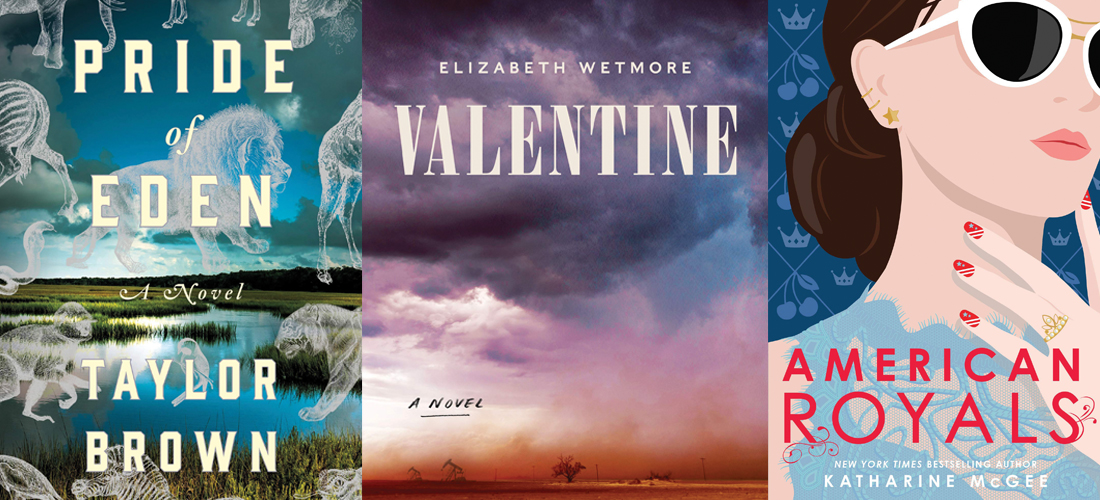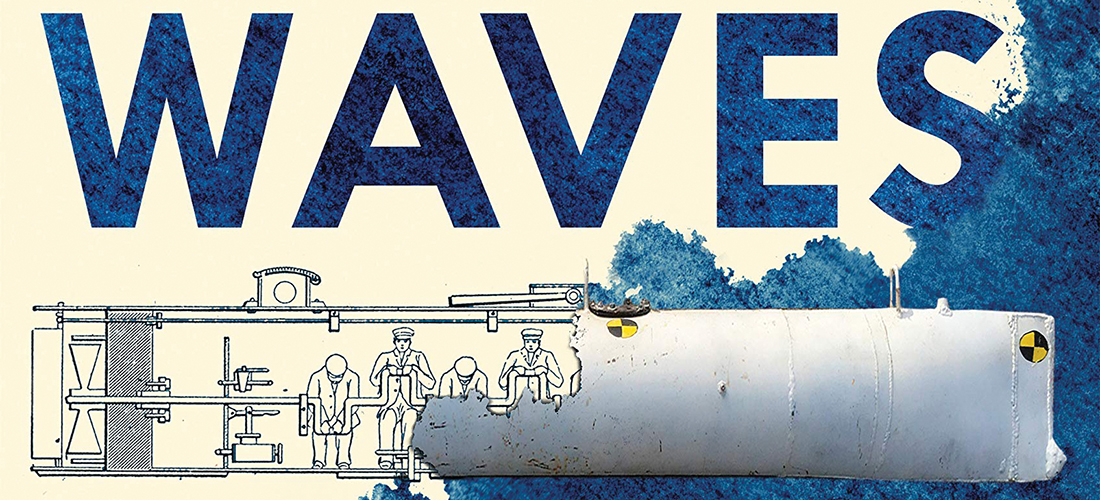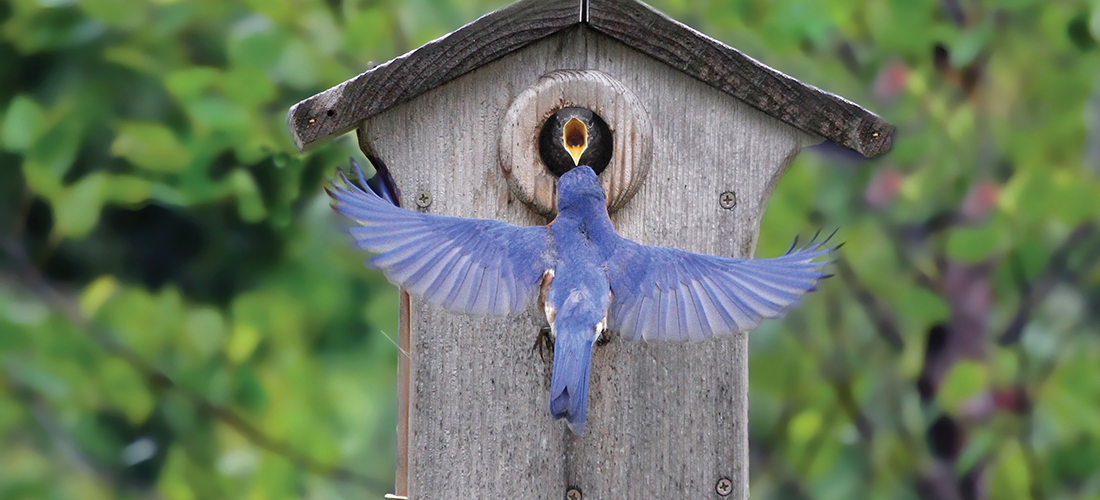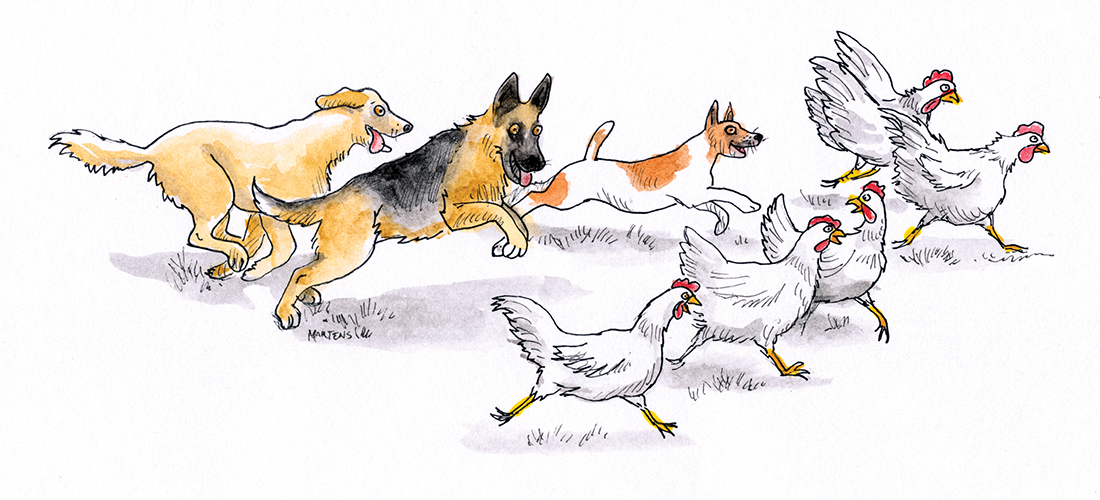March Books
FICTION
The Yellow Bird Sings, by Jennifer Rosner
In Poland, as World War II rages, Róza and her daughter Shira are hiding from German soldiers in a barn loft. Having to be very quiet, Róza makes up a story about a yellow bird that is free to go out and sing and make noise while they must be quiet. Separated when they have to leave the barn, mother and daughter remain attached through their musical abilities and the story of the bird, but wonder if they will ever see each other again. A mesmerizing story.
The Pride of Eden, by Taylor Brown
Anse Caulfield is a life-toughened Vietnam veteran and former jockey who, for reasons of his own, uses an ill-gotten windfall to establish Little Eden, a wildlife sanctuary on the coast of Georgia. Here, a collection of unforgettable mavericks, living on the periphery of society, wage an unofficial war of their own to rescue exotic animals from the hands of greed and cruelty. Brown has the rare ability to place his readers into the minds of his characters, allowing them to inhabit their skin. We can tap into their senses, passions and motivations. Every page explodes, and every line is pure poetry. Pride of Eden is original, sensitive, and unsparing.
The New Life of Hugo Gardner, by Louis Begley
Hugo is in his 80s, his wife has just left him for a younger man, and he’s lonely. With a plan to end his life should it become necessary (he doesn’t want to be a burden), he tries to find a way to be happy. In the past this has always included sexual intimacy, so why should that change?
Blackwood, by Michael Farris Smith
The thing about the invasive kudzu vine is that it is unstoppable. Nearly impenetrable, it harbors and smothers its secrets. The countryside around the dead-end town of Red Bluff, Mississippi, is filled with the encroaching vine and the sad stories it keeps. That peace is shattered when a vagabond family lands in the town, along with an artist whose family met with tragedy there when he was a boy. A disturbing chain of events follows in this tense, breathtaking novel.
The Glass Hotel, by Emily St. John Mandel
A Ponzi scheme collapses, obliterating lives and fortunes, and a woman mysteriously disappears from the deck of a container ship at sea. These seemingly disparate events converge in a glass-fronted hotel on Vancouver Island in this story of crisis and survival. An exquisite, character-driven novel that will haunt the reader for days after the last page.
A Good Neighborhood, by Therese Anne Fowler
It began with a tree, a wonderful, massive oak in a modest, diverse neighborhood, with small, modest homes, and close-knit neighbors. The tree is a treasured part of a property owned by a widowed black college professor and her talented teenage son. The tree is put in peril and the serenity of the neighborhood is disrupted when a gargantuan home is built on a razed lot next door by a wealthy businessman who does little to hide his contempt for his neighbors. This man has a beautiful young daughter, and as fate would have it, the two teens fall in love, setting the course for heartbreak and disaster. This tale will provide fodder for book clubs and community discussions for years to come.
My Dark Vanessa, by Kate Elizabeth Russell
It was love. It was real. She may have been only 15 years old, and he was her teacher, but nobody understands the depth of their connection. Yes, it was love, because if it wasn’t love then it was something else, something ugly, something unspeakable. And now, 16 years later, she is still not ready to face that possibility, not ready to label him a monster and herself a victim. It’s not necessary for you to be the judge, just accept the journey through Vanessa’s memories as she tries to make peace with who she is today.
Writers and Lovers, by Lily King
Not since Edward St Aubyn’s Patrick Melrose novels has a character so vividly, brilliantly and quietly risen off the page as has Casey Peabody in Writers and Lovers. Seamlessly crafted by a master of literary fiction, King’s novel of fear, bravery, chance, silliness, disappointment and deep fortitude is absolutely impossible to put down.
The Operator, by Gretchen Berg
Vivian is a telephone operator in a small town in the 1950s and listens in on the conversations. One night she hears a secret about her family that upends her life and, of course, leads to other secrets coming to light. A humorous story of small-town life that is loosely based on the author’s grandmother.
Valentine, by Elizabeth Wetmore
In the early hours of the morning after Valentine’s Day, 14-year-old Gloria Ramírez appears on the front porch of Mary Rose Whitehead’s ranch house, broken and barely alive. The teenager has been viciously attacked in a nearby oil field — an act of brutality that is tried in the churches and barrooms of Odessa before it can reach a court of law. When justice is evasive, a local woman decides to take matters into her own hands, setting the stage for a showdown with potentially devastating consequences. Valentine is a haunting exploration of the intersections of violence and race, class and region in a story that plumbs the depths of darkness and fear, yet offers a window into beauty and hope.
NONFICTION
House Lessons, by Erica Bauermeister
This book is a joy to read. Be prepared to underline insights on every page. House Lessons is a meditation that takes place over two decades. This memoir in essay form fuses thoughtful perceptions with practical information about how we consider spaces and how people inhabit them. A quiet delight.
Pearls of Wisdom: Little Pieces of Advice (That Go a Long Way), by Barbara Bush
At the end of the day, she taught all of us some valuable lessons. As First Lady, she made a point of cuddling a baby with AIDS and hugging a young man who was HIV positive and whose family had rejected him, showing us by example the importance of compassion and the myth of fear. As a mother, she made sure we all knew that your children must come first, and one of the most important things you can do is to read to them. As a friend and mentor, she showed that you had to be true to yourself, and even at the end of her life, she taught us how to die with grace.
CHILDREN’S BOOKS
The Imaginaries: Little Scraps of Larger Stories, by Emily Winfield Martin
Beautiful, whimsical, and ethereal are the thoughts and illustrations that make up the “Imaginaries.” A book of story starters and idea encouragers, The Imaginaries could also serve as a most intriguing coffee table art book. Martin never disappoints! (Ages 6-10.)
The Girl and the Dinosaur, by Hollie Hughes
On a beach in a town not so very far from here, a girl and a dinosaur find each other and, with spirits wild and free, explore the night together. Dinosaur lovers and dreamers alike will adore this stunningly illustrated lyrical tale of fun, fantasy and flight. (Ages 3-6.)
No More Naps, by Chris Grabenstein
No kid ever wanted to take a nap, but what if, when that kid finally does get drowsy and cave, all the naps had been taken by everyone else in the neighborhood — even the dog! A cautionary tale with a little sleepy time silliness that will certainly stay on top of the “read it again” stack. (Ages 2-4.)
Nesting, by Henry Cole
From the first dry grass and small twigs gathered to build a perfect, comfortable nest, to the warm summer day when the independent babies fly away on their own, this simple sweet picture book chronicles a season in the life of a robin family. Young ornithologists and nature lovers will enjoy learning more about the wild, wonderful world. (Ages 3-6.)
American Royals, by Katharine McGee
If George Washington had been named king instead of president, America may very well have been naming a new queen instead of a new president in 2020. The author of The Thousandth Floor brings that scenario to life and, with Harry and Meghan stepping down from their royal duties and moving to North America, this fun book couldn’t be more timely. (Ages 14 and up.) PS
Compiled by Kimberly Daniels Taws and Angie Tally









